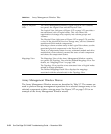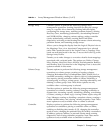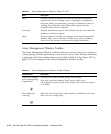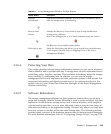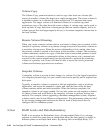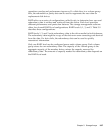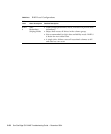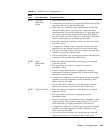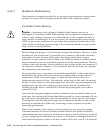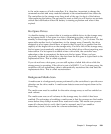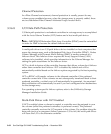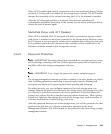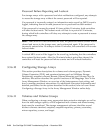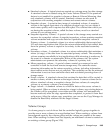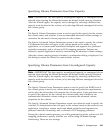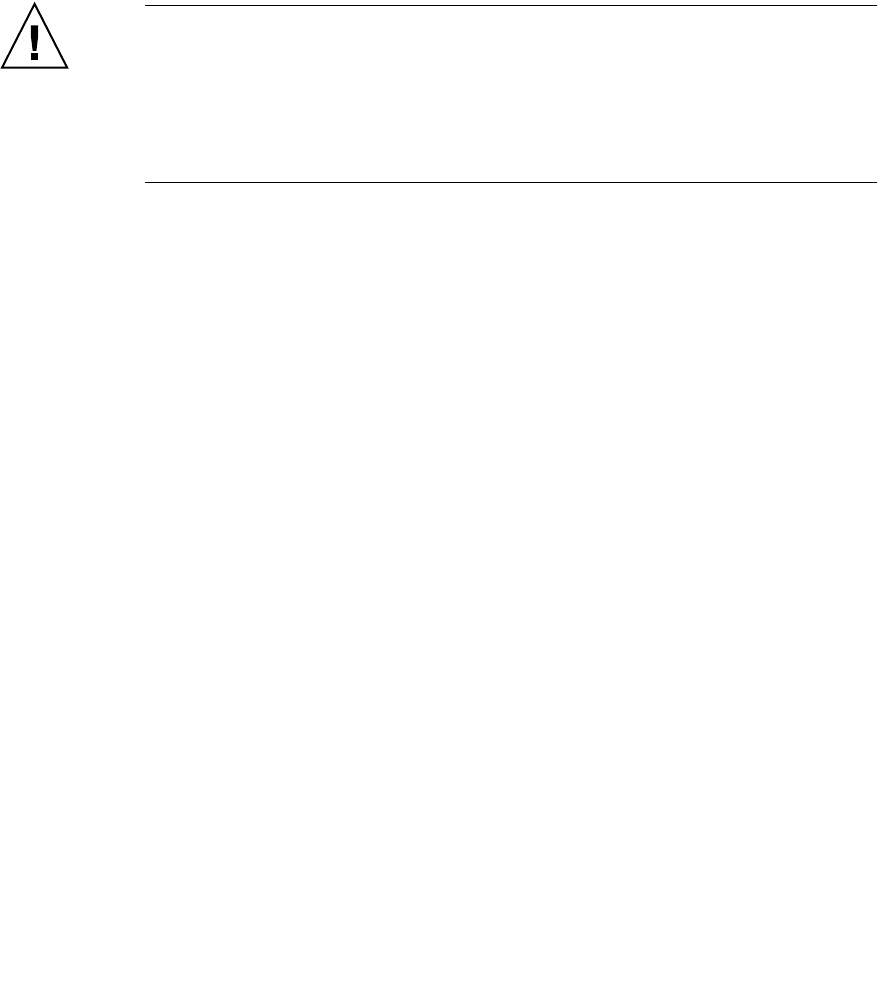
3-60 Sun StorEdge 5310 NAS Troubleshooting Guide • December 2004
3.3.6.7 Hardware Redundancy
Data protection strategies provided by the storage system hardware include cache
memory, hot spare drives, background media scans, and channel protection.
Controller Cache Memory
Caution – Sometimes write caching is disabled when batteries are low or
discharged. If a parameter called Write caching without batteries is enabled on a
volume, write caching continues even when batteries in the command module or
array module are discharged. If you do not have an uninterruptible power supply
(UPS) for power loss protection, do not enable this parameter, because data in the
cache will be lost during a power outage if the command module or array module
does not have working batteries.
Write caching can increase I/O performance during data transfers. However, it also
increases the risk of data loss if a controller (or its memory) fails while unwritten
data resides in cache memory. Write cache mirroring protects data during a
controller or cache memory failure. When write cache mirroring is enabled, cached
data is mirrored across two redundant controllers with the same cache size. The data
written to the cache memory of one controller is also written to the cache memory of
the alternate controller. Therefore, if one controller fails, the alternate can complete
all outstanding write operations.
To prevent data loss or corruption, the controller periodically writes cache data to
disk (flushes the cache) when the amount of unwritten data in cache reaches a
certain level, called a start percentage, or when data has been in cache for a
predetermined amount of time. The controller writes data to disk until the amount
of data in cache drops to a stop percentage level. Start and stop percentages can be
configured by the user. For example, you can specify that the controller start
flushing the cache when it reaches 80% full and stop flushing the cache when it
reaches 16% full.
Low start and stop percentages provide for maximum data protection. However, in
both cases, this increases the chance that data requested by a read command will not
be in the cache, decreasing the cache hit percentage for writes and the I/O request.
Choosing low start and stop percentages also increases the number of disk writes
necessary to maintain the cache level, increasing system overhead and further
decreasing performance.
Data in the controller cache memory is also protected in case of power outages.
Command modules and array modules contain batteries that protect the data in
cache beekeeping a level of power until the data can be written to the drive media. If
a power outage occurs and there is no battery or the battery is damaged, data in the
cache that has not been written to the drive media will be lost, even if it is mirrored



